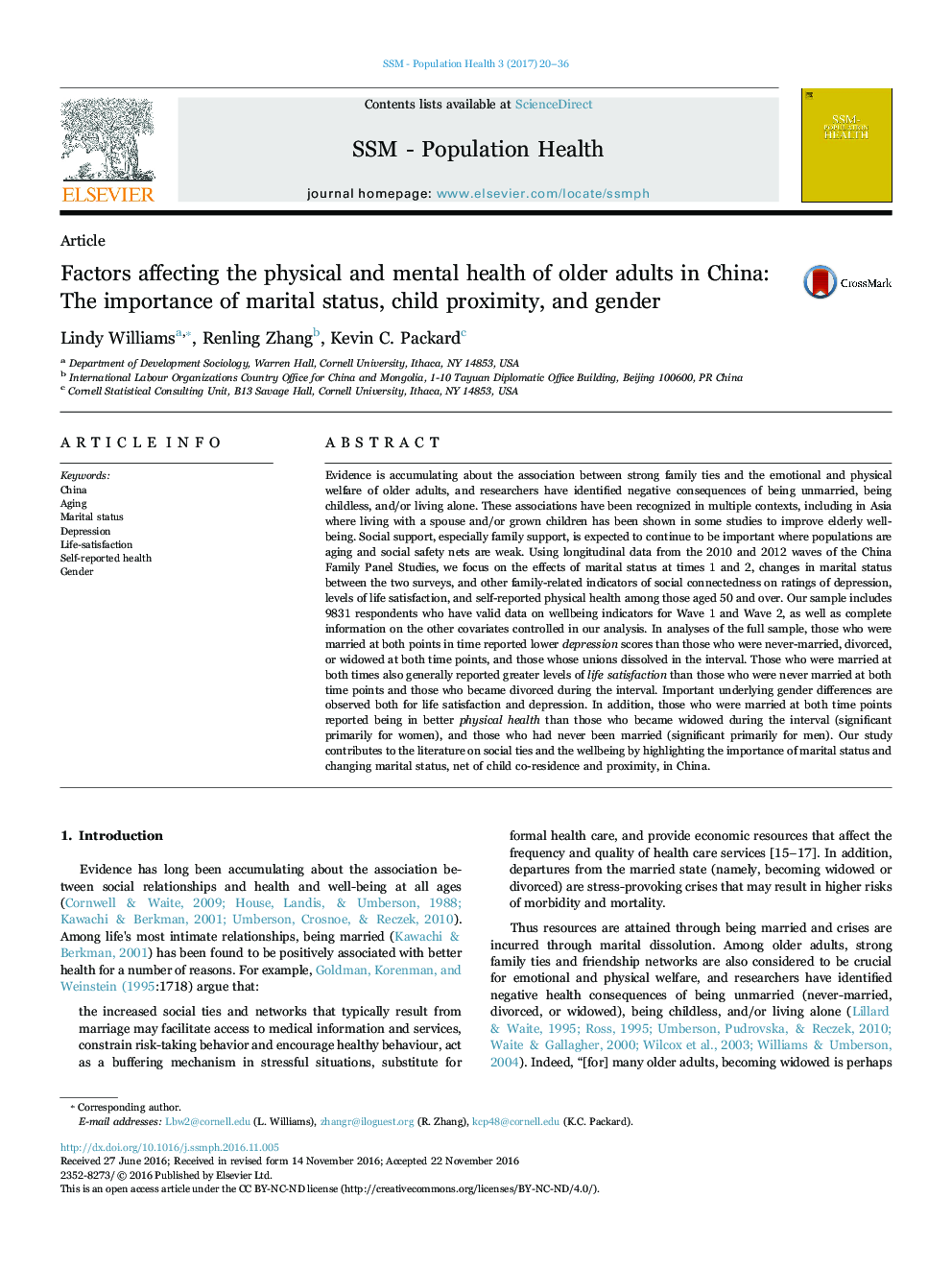| Article ID | Journal | Published Year | Pages | File Type |
|---|---|---|---|---|
| 5123230 | SSM - Population Health | 2017 | 17 Pages |
â¢Using nationally representative panel data from China, we examine three indicators of health and well-being among older adults and find some consistency and some differences in the ways in which marital status and change in marital status affect those indicators.â¢Compared to those who were married at both time points, those who had never been married and those who became widowed during the interval had lower physical health scores, net of other factors.â¢Those who were married at both points in time reported lower depression scores than those who were never-married, widowed, or divorced at both time points, and those whose unions dissolved in the interval.â¢Those who were married at both times also reported higher levels of life satisfaction than those who had never been married and those whose unions dissolved through divorce during the interval.â¢The availability of children failed to reduce the significance of most of these effects, although intergenerational co-residence was found to have some positive health effects for older Chinese adults.â¢There are substantial gender differences in health and what predicts health among older Chinese adults.
Evidence is accumulating about the association between strong family ties and the emotional and physical welfare of older adults, and researchers have identified negative consequences of being unmarried, being childless, and/or living alone. These associations have been recognized in multiple contexts, including in Asia where living with a spouse and/or grown children has been shown in some studies to improve elderly well-being. Social support, especially family support, is expected to continue to be important where populations are aging and social safety nets are weak. Using longitudinal data from the 2010 and 2012 waves of the China Family Panel Studies, we focus on the effects of marital status at times 1 and 2, changes in marital status between the two surveys, and other family-related indicators of social connectedness on ratings of depression, levels of life satisfaction, and self-reported physical health among those aged 50 and over. Our sample includes 9831 respondents who have valid data on wellbeing indicators for Wave 1 and Wave 2, as well as complete information on the other covariates controlled in our analysis. In analyses of the full sample, those who were married at both points in time reported lower depression scores than those who were never-married, divorced, or widowed at both time points, and those whose unions dissolved in the interval. Those who were married at both times also generally reported greater levels of life satisfaction than those who were never married at both time points and those who became divorced during the interval. Important underlying gender differences are observed both for life satisfaction and depression. In addition, those who were married at both time points reported being in better physical health than those who became widowed during the interval (significant primarily for women), and those who had never been married (significant primarily for men). Our study contributes to the literature on social ties and the wellbeing by highlighting the importance of marital status and changing marital status, net of child co-residence and proximity, in China.
